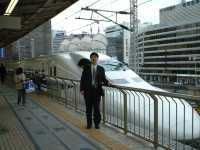The hunting area is a very well-known location here. Very standard. Very good facilities. It is also a very strict place in Tanzania. It is also good to visit here.
;
Selous Mapumziko Lodge Review
4.9 /59 Reviews






5/5
Selous Mapumziko Lodge
Posted: Aug 4, 2018
Like
Popular Destinations
Bangkok Travel | Brisbane Travel | Bali Travel | Perth Travel | Kuala Lumpur Travel | Singapore Travel | Guangzhou Travel | Shanghai Travel | Hong Kong Travel | Tokyo Travel | Beijing Travel | Ho Chi Minh City Travel | Seoul Travel | Manila Travel | Phuket Travel | Zug Travel | Shaolin Temple Travel | Pampanga Travel | Fort Augustus Travel | Gelsenkirchen Travel | Chandigarh Travel | Chifeng Travel | Longji Terraces Travel | Cookstown Travel | Pontevedra Province Travel | San Luis Travel | Joensuu sub-region Travel | New Braunfels Travel | Yanling Travel | Glen Allen Travel
Recommended Attractions at Popular Destinations
Bangkok attraction near me | Tokyo attraction near me | Manila attraction near me | Hong Kong attraction near me | Seoul attraction near me | Taipei attraction near me | Los Angeles attraction near me | New York attraction near me | Shanghai attraction near me | Shenzhen attraction near me | Kuala Lumpur attraction near me | Osaka attraction near me | Guangzhou attraction near me | Singapore attraction near me | London attraction near me | San Francisco attraction near me | Beijing attraction near me | Macau attraction near me | Bali attraction near me | Ho Chi Minh City attraction near me | Paris attraction near me | Orlando attraction near me | Jakarta attraction near me | Phuket attraction near me | Chicago attraction near me | Toronto attraction near me | Cebu attraction near me | Dallas attraction near me | Istanbul attraction near me | Dubai attraction near me
Popular Attractions
Beijing Aquarium | Park Güell | Arrowtown | Marina Bay Sands | Ubud Palace | Butterfield & Swire's Godowns & Wharf | Gulangyu Island | Phi Phi Islands | Boracay | Chiang Mai Night Safari | Ghibli Museum | Yangguan Ancient Site | Mingsha Mountain Crescent Spring | Mogao Grottoes | Yuelu Mountain | Souterroscope | Aqua Park | Skydive The Ranch | Wye Valley Spa | Mobilboard Pau | Espace Balnéoludique | Sungtseling | Hunan Provincial Museum | Zoo Negara Malaysia | Casa Batlló | Pattaya Beach | Ueno Park | Hyde Park | Jade Dragon Snow Mountain | Yulong River Park
Popular Travelogues
Bangkok Travelogue | Tokyo Travelogue | Hong Kong Travelogue | Seoul Travelogue | Los Angeles Travelogue | New York Travelogue | Shanghai Travelogue | Shenzhen Travelogue | Kuala Lumpur Travelogue | Osaka Travelogue | Singapore Travelogue | London Travelogue | Beijing Travelogue | Macau Travelogue | Bali Travelogue | Paris Travelogue | Phuket Travelogue | Toronto Travelogue
Payment Methods
Our Partners
Copyright © 2024 Trip.com Travel Singapore Pte. Ltd. All rights reserved
Site Operator: Trip.com Travel Singapore Pte. Ltd.
Site Operator: Trip.com Travel Singapore Pte. Ltd.


